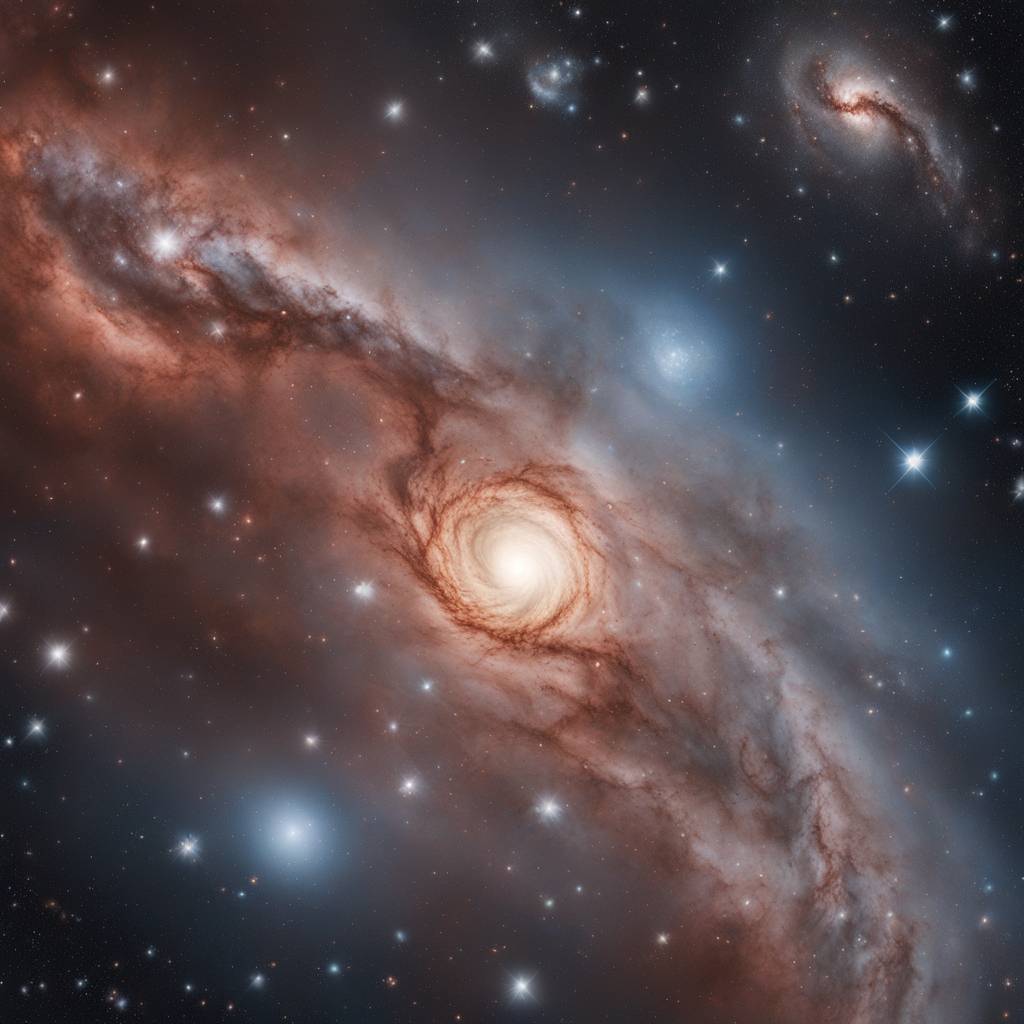A team of astronomers led by Alberto Bolatto at the University of Maryland, College Park, has used NASA’s James Webb Space Telescope to survey the starburst galaxy Messier 82 (M82). Located 12 million light-years away in the constellation Ursa Major, M82 is a relatively compact galaxy that is experiencing rapid star formation, with new stars forming 10 times faster than the Milky Way. The team used Webb’s Near-Infrared Camera (NIRCam) to study the physical conditions within M82 that are conducive to star formation.
Webb’s ability to observe in the infrared spectrum allowed the team to see through the dusty and gaseous curtains that obscure star formation processes. The NIRCam images revealed intricate details within M82’s center, including regions where molecular hydrogen is being illuminated by nearby young stars, as well as areas with iron-rich supernova remnants. Every white dot in the images represents either a star or a star cluster, enabling astronomers to accurately count the star clusters within the galaxy.
In longer infrared wavelengths, the team observed clumpy tendrils of gas extending above and below M82’s plane, indicative of a galactic wind driven by the rapid star formation and supernovae in the galaxy’s core. By studying the fine structure of the galactic wind using PAH emission, the team discovered unexpected similarities between the PAH emission and that of hot, ionized gas. These findings challenge existing theories and suggest the need for further investigation into the dynamics of star formation in galaxies like M82.
Webb’s observations of M82 have raised new questions about star formation processes, prompting the team to continue their investigation using additional data from Webb, including observations of another starburst galaxy. Spectroscopic data from Webb will help determine the ages of star clusters in M82 and provide insights into the timing of different phases of star formation in a starburst galaxy environment. This research not only sheds light on the processes at work within M82 but also contributes to a deeper understanding of the early universe and the evolution of galaxies.
The team’s findings have been accepted for publication in The Astrophysical Journal, highlighting the significance of Webb’s observations in advancing our knowledge of star formation and galactic dynamics. By studying galaxies like M82, which are relatively close to us, astronomers can gain valuable insights into processes that also occurred in the early universe. Webb’s role as the world’s premier space science observatory continues to be pivotal in unraveling mysteries within our solar system, distant worlds around other stars, and the origins of the universe.













